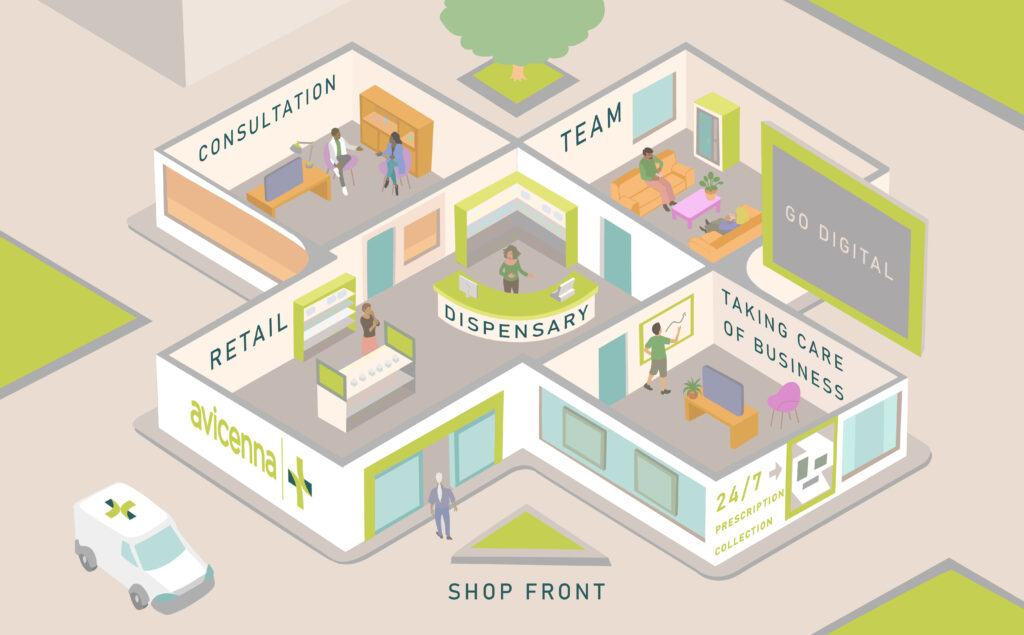Interactive maps for website navigation.
We recently worked on an exiting project in collaboration with click and climb to create a sales tool for the award winning pharmacy Avicenna. It was showcased at the NEC National Pharmacy show in Birmingham.
This part of an ongoing project to create an engaging staff training tool that will help them learn about all of the different aspects of the company by navigating through in an interactive map.



Having an interactive map on your website can provide numerous benefits, enhancing the user experience and serving various functional purposes. Here are some of the advantages:
- Improved User Engagement: Interactive maps are visually appealing and can captivate users, encouraging them to spend more time on your website.
- Enhanced User Experience: Interactive maps allow users to explore and interact with the content in a personalized manner, leading to a more enjoyable experience.
- Easy Navigation: Maps make it easier for users to locate places, branches, or events, reducing the chance of confusion or frustration while trying to find relevant information.
- Visual Representation: Maps offer a clear and concise visual representation of data, making complex information easier to understand and digest.
- Increased Interactivity: Interactive maps can be enriched with various functionalities like zooming, panning, searching, filtering, and clickable markers, enabling users to focus on the areas of their interest.
- Mobile-Friendly: With the rise of mobile usage, interactive maps are responsive and adapt well to various devices, providing a seamless experience on both desktops and mobile devices.
- Geospatial Data Presentation: If your website deals with locations, events, or any geographic data, an interactive map becomes an essential tool for displaying and organizing this information.
- Marketing and Business Insights: For businesses, interactive maps can display store locations, service areas, or customer data, providing valuable insights for marketing and decision-making.
- Tourism and Travel: Websites related to tourism, travel, or hospitality can benefit greatly from interactive maps to showcase destinations, attractions, hotels, and travel routes.
- Real-Time Information: In some cases, interactive maps can be integrated with real-time data, such as traffic conditions, weather updates, or live events, enhancing their usefulness and relevance.
- Storytelling: Interactive maps can be used to tell compelling stories by guiding users through a sequence of locations or events, making the content more engaging and memorable.
- Competitive Advantage: Implementing interactive maps can set your website apart from competitors, as it adds an extra layer of functionality and sophistication.
- Geotargeting and Personalization: Interactive maps can facilitate geotargeting, allowing you to show location-specific content or services to users based on their geographic location.
- Data Visualization: For websites dealing with research, statistics, or demographics, interactive maps can be an excellent tool to visualize data patterns and trends geographically.
In summary, incorporating interactive maps into your website can greatly enhance user experience, increase engagement, and provide practical functionalities, making it a valuable asset for a wide range of websites across different industries.
